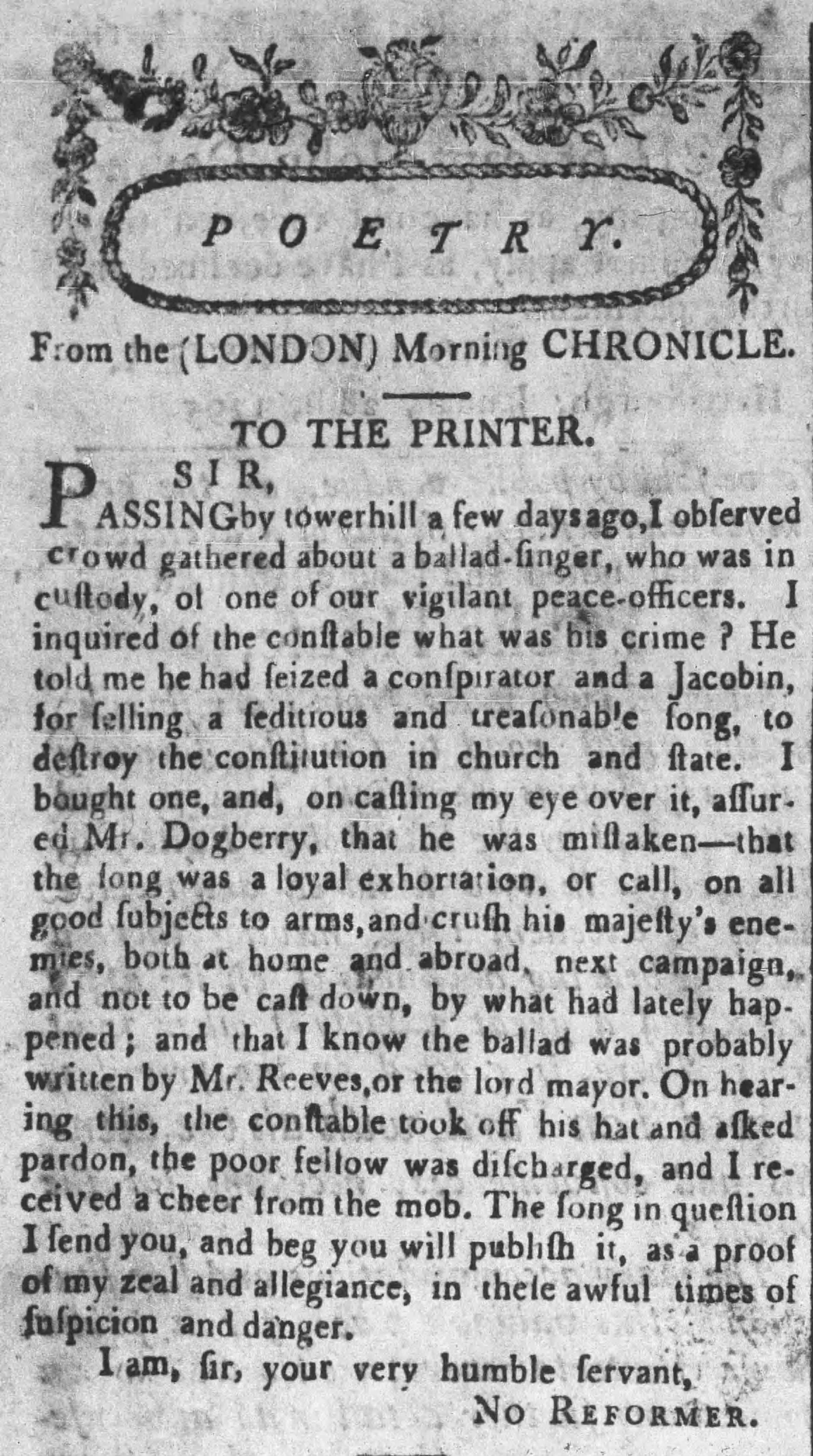Selling & Singing Ballads in the 18th Century
Itinerant ballad-sellers often appear on the margins of 18th century artwork, often singing or selling ballads that provide commentary on the main action in the artwork itself. The ballads and similar broadsides also appear to be hung up in interiors, as seen in Kitchen Interior or The Fellow 'Prentices at their Looms.
Ballad sellers were also called “ballad mongers” (see references from 1738, 1730, and 1800). While itinerant ballad-sellers are well-documented in England, I haven’t found evidence for this in the American colonies (though there are examples of ballad singing in 18th century America).
Broadside ballads are available through the English Broadside Ballad Archive and the Lewis Walpole Library.
Additional Resources
This site contains affiliate links for which I may be compensated
Art and Music in Britain: Ballad Sellers and Ballad Singers
Broadsides and Their Music in Colonial America
Ballads and Broadsides in Britain, 1500-1800
The Rise of the English Street Ballad 1550-1650
Studies in Ephemera: Text and Image in Eighteenth-Century Print
A Merry new Song, 1688
A Rake’s Progress: The Tavern Scene by William Hogarth, 1735
The Lamentable Fall of Madam Geneva Sepr 29 1736
The Enraged Musician by William Hogarth, 1741
The fellow 'prentices at their looms by William Hogarth, 1747
The Industrious 'Prentice out of his Time, & Married to his Master's Daughter by William Hogarth, 1747
The March of the Guards to Finchley by William Hogarth, 1749-1750
Gin Lane by William Hogarth, 1750-1751
London Cries: Fun Upon Fun by Paul Sandby, 1759
Friendly as a ballad singer at ye country wake, 1760?
the F-sh-m-grs Downfall or Poors Triumph, c. 1762
Satire on the Act for the Relief of Insolvent Debtors, 1763
The Ballad Singer by Henry Robert Morland, 1764
The City Chanters, 1771
A German ballad singer, 1772
The Old Ballad Singer, 1775
A Girl Buying a Ballad by Henry Walton, 1778
Dotage, c. 1780s
The Ballad Singers, c. 1781
Preparing to Start, 1787
Ten Views of Encampments in Hyde-Park and Black-Heath by Paul Sandby, 1780
Robin O’Green of Burnley, 1780
Detail from Promenade of the Ambassadors of Tipu Sultan in the Park of Saint-Cloud by Charles-Eloi Asselin, 1788
The Young Ballad Singers, 1790-1798
A ballad-seller, 1790s
A Ballad-Seller’s Stall by Joseph Mallord William Turner, 1793
He would be a Soldier, or the History of John Bulls warlike Expedition, 1793; a soldier’s wife (in the lower right-hand corner) wears a pocket apron while carrying her children and a ballad titled “O Bony Lass will you live in a Barrack” (similar to O Say Bonny Lass)
The farmer come to town on a foolish errand, 1794
The Country Ballad Singers, 1794
Worcester Cathedral by Joseph Mallord William Turner, c. 1794-1795
A New Love Song only ha’penny a piece, 1796
Maid Buying a Love-Ditty by Pehr Hilleström, c. 1796
Diligence and Dissipation: The wanton turn’d out of doors for misconduct, 1797
The Wandering Sailor by Henry Singleton, 1798
Weeping by Thomas Rowlandson, 1800
Rapture by Thomas Rowlandson, 1800
Le suprême bon ton, 1800-1805
The Ballad Singers by Thomas Rowlandson
Last Dying Speech and Confession
A printed document purporting to report the last words of a condemned criminal; an enterprising ballad-seller could sell such documents at public executions. For more on this, see “Tracking the petty traitor across genres,” “Ballads and the emotional life of crime,” and “The maiden’s bloody garland: Thomas Warton and the elite appropriation of popular song” in Ballads and Broadsides in Britain, 1500-1800, or “Criminal biography and the last dying confessions” in Crime, Policing and Punishment in England, 1660-1914.
The Idle Prentice Executed at Tyburn by William Hogarth, 1747
London Cries: Last Dying Speech and Confession by Paul Sandby, c. 1759
Last Dying Speech and Confession by Thomas Rowlandson, c. 1798
Cries of London: Last dying Speech & Confession by Thomas Rowlandson, 1799
Miscellaneous 18th century references to selling & singing ballads
The Virginia Gazette
March 14, 1751
The Pennsylvania Evening Post, and Public Advertiser
January 1, 1782
The Carlisle Gazette, and the Western Repository of Knowledge
May 22, 1793
Pennsylvania Weekly Telegraph
February 2, 1795



